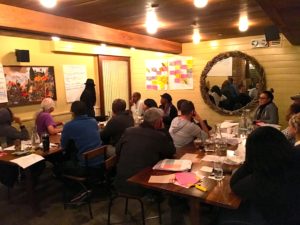
HOW I CAN HELP YOUR ORGANIZATION?
Below are some of my skills for Organizational Analysis and Strategic Planning:
SWOT Analysis
SWOT analysis often talks of the basics of an organization. This has historically been used for many organizations when evaluating their projects positioning. People see it as so important because the method evaluates a project or agency Strengths, Weaknesses, Opportunities, and Threats.
Business owners or project managers apply this structured planning method to know where their venture stands. The analysis’ benefit is not limited to companies or industries only. You can carry out SWOT for products, places, and even people too. Both new and existing businesses can use it.
SCOPE Planning
SCOPE — situation, core competencies, obstacles, prospects and expectations — attempts to take the SWOT idea a little further. It not only analyzes internal and external factors, but it also attempts to align the internal with the external to provide a road map of strategic development.
Situation refers to prevailing conditions under which everything must be considered.
Internal core competencies of the business are aligned with external prospects.
Obstacles and expectations can be either internal or external.
This model can present more information and has more flexibility than SWOT.

SOAR
SOAR is a positive-thinking method of analysis that identifies strengths, opportunities, aspirations and results. It’s intended for creative problem solving, and asks the user to perform five key “I” actions when facing a decision or formulating a strategy: initiate, inquire, imagine, innovate and implement. Proponents of SOAR say it’s a way to include the key factors of motivation and engagement into business planning.
PEST Analysis
This helps you determine how these factors will affect the performance and activities of your organization in the long-term. It is often used in collaboration with other analytical tools like the SWOT Analysis and Porter’s Five Forces to give a clear understanding of a situation and related internal and external factors.
Understanding the PEST Factors
Political – Here government regulations and legal factors are assessed in terms of their ability to affect the policy environment and system markets.
Economic – Through this factor, organizations examine the economic issues that are bound to have an impact on the agency.
Social – With the social factor, an organization can analyze the socio-economic environment of its services via elements like client/population demographics, cultural limitations, community trend assessment and projection, and emotional capacity.
Technological – How technology can either positively or negatively impact the introduction of a program or service into a community is assessed here.
PESTLE Analysis
An extension of PEST Analysis
PESTEL analysis is an extension of PEST that is used to assess two additional macroeconomic factors. These factors are the Legal and Environment conditions that can have an impact on the company. Examples of PESTLE analysis are similar to those of a PEST analysis, but they would include the following: